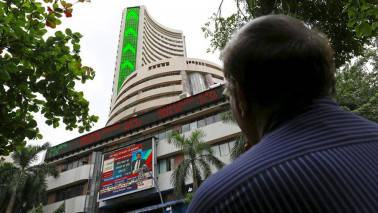Recent state elections results saw farm loan waivers as one of the major promises of the winning political party, thereby strengthening the probability of similar announcements in upcoming general elections.
Anil Gupta
Unlike a full annual budget, with an eye on upcoming elections, the union government is expected to present a vote on account in February 2019. To benefit the weaker sections of the society at large and in line with past trends, we expect that the target for institutional credit for agricultural sector shall be increased to over Rs 12 trillion from Rs 11 trillion for FY2018-19.
Further, to increase the credit supply to the medium, small and micro enterprises (MSMEs), the refinancing target by Micro Units Development and Refinance Agency Bank is also expected to increase to over Rs 4 trillion from Rs 3 trillion for FY2018-19.
Should we give no in last two sentences, what would be the rationale for 12 trillion and 4 trillion? Housing for all by 2022 has been one of the key programme for the current government, but recently liquidity issues for NBFCs can potentially impact the credit supply to housing.
Hence, we expect some more announcements related to increase in funding availability and/or refinancing of housing loans for banks and NBFCs to increase the credit supply for housing sector.
While all the above factors are positive for the credit supply and growth in bank credit, however certain announcements related to relief on debt servicing for certain segments can be an area of concern for the banks' asset quality.
Recent state elections results saw farm loan waivers as one of the major promises of the winning political party, thereby strengthening the expectations of small borrowers and probability of similar announcements in upcoming general elections.
Such measures may continue impact the credit culture of borrowers and may also impact the asset quality of banks in the near term. In that regard any large-scale debt relief for small borrowers in agriculture or MSME sector can lead to concerns on fiscal slippage leading to overall rise in interest rates in economy and in-turn impact the funding costs for banks and swell losses on their bond portfolios.
This will lead not only lead to higher cost of borrowings and adversely impact the profitability of banks unless the scale of such waivers is contained by targeting the borrowers under genuine stress.
On the capital front, the government has recently upsized the recapitalisation package by Rs 410 billion for public sector banks (PSBs) to Rs 1.06 trillion for FY2019 (Rs 900 billion in FY2018). However, a large portion of this capital is expected to be utilized against loss provisions, thereby leaving limited capital for supporting credit growth.
The previous vote on accounts have announced budgetary allocations for recapitalisation of PSBs and with increasing regulatory capital requirements for banks by end of FY2020, the capital allocation for PSBs remains to be watched for.
We expect the capital requirements for PSBs to remain sizeable at over Rs 500 billion during FY2020 to support ~10 percent credit growth, but the budgetary allocation is expected to be lower than requirement on the back of expectations that PSBs may be able to raise some capital from the markets as earnings profile shows signs of improvement.
With improved capitalisation and reducing net non-performing advances, we also expect that out of the 11 PSBs currently under prompt corrective action (PCA) framework, around 3-4 PSBs will be able to exit PCA in near term.
With better capital position, reduced concerns on asset quality and capital erosion because of losses, the ability of PSBs outside PCA framework to support credit growth will also improve during FY2020.
In absence of ability to support credit growth, PSBs have also refrained from chasing deposit growth which has also prevented a sharp increase in deposit rates during last two years.
Depending on their capital position and ability to support credit growth, we expect PSBs will restart posing competition for private sector banks (PVBs) both on the deposit side and credit side leading to higher deposit rates and pressure on lending yields, which is likely to be negative for PVBs.
Accordingly, we believe that the market share loss for PSBs will bottom out at 62-64 percent of advances (currently at 69 percent) and for PVBs to stand at 36-38 percent by end of FY2020.
Overall, we expect with better capital position, asset quality and profitability by end of FY2020, the banking sector will be better positioned to kick-start the investment cycle in FY2021, even as the credit growth will be driven by the investment demand.
The author is Vice President & Sector Head - Financial Sector Ratings, ICRA Ltd













